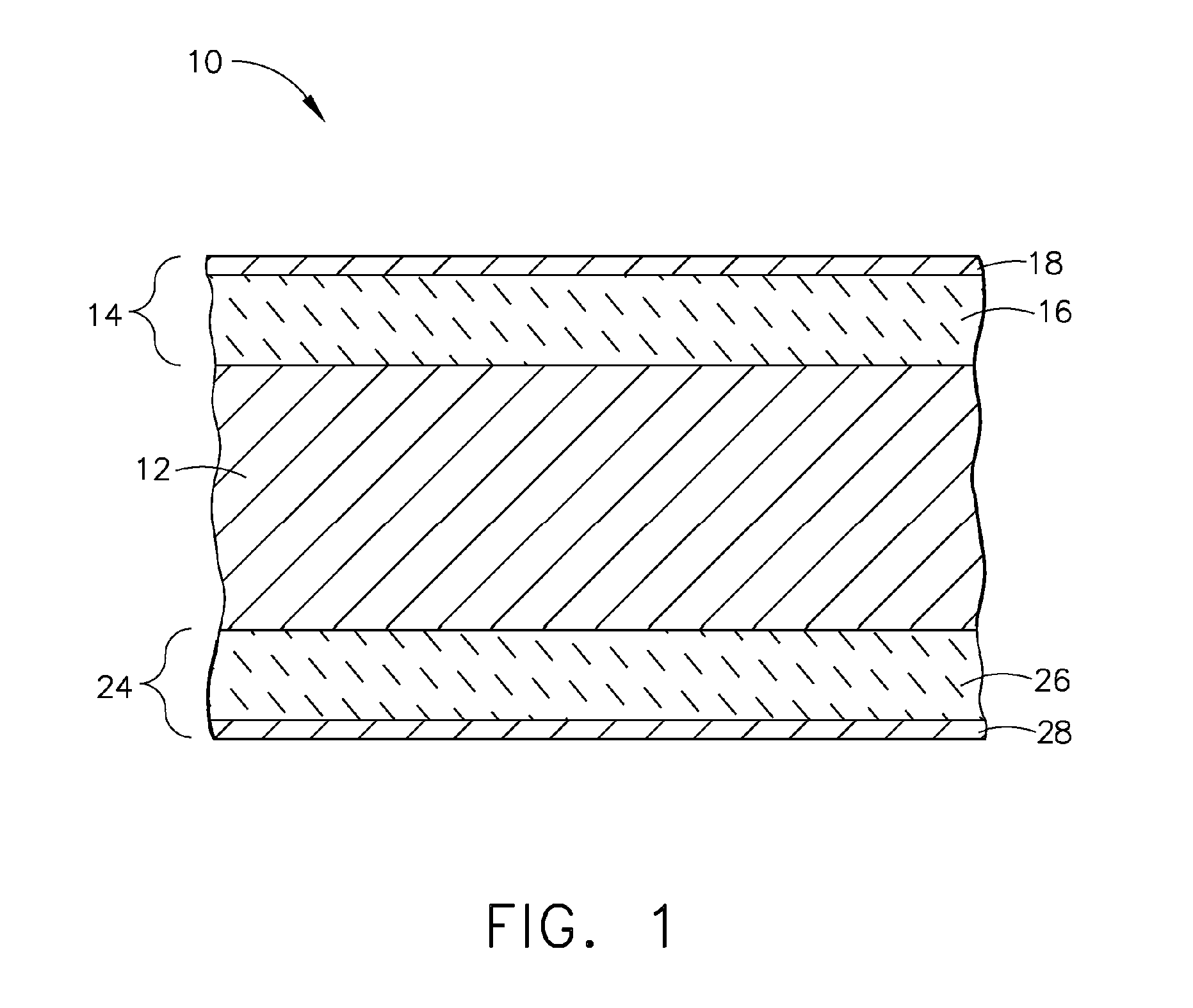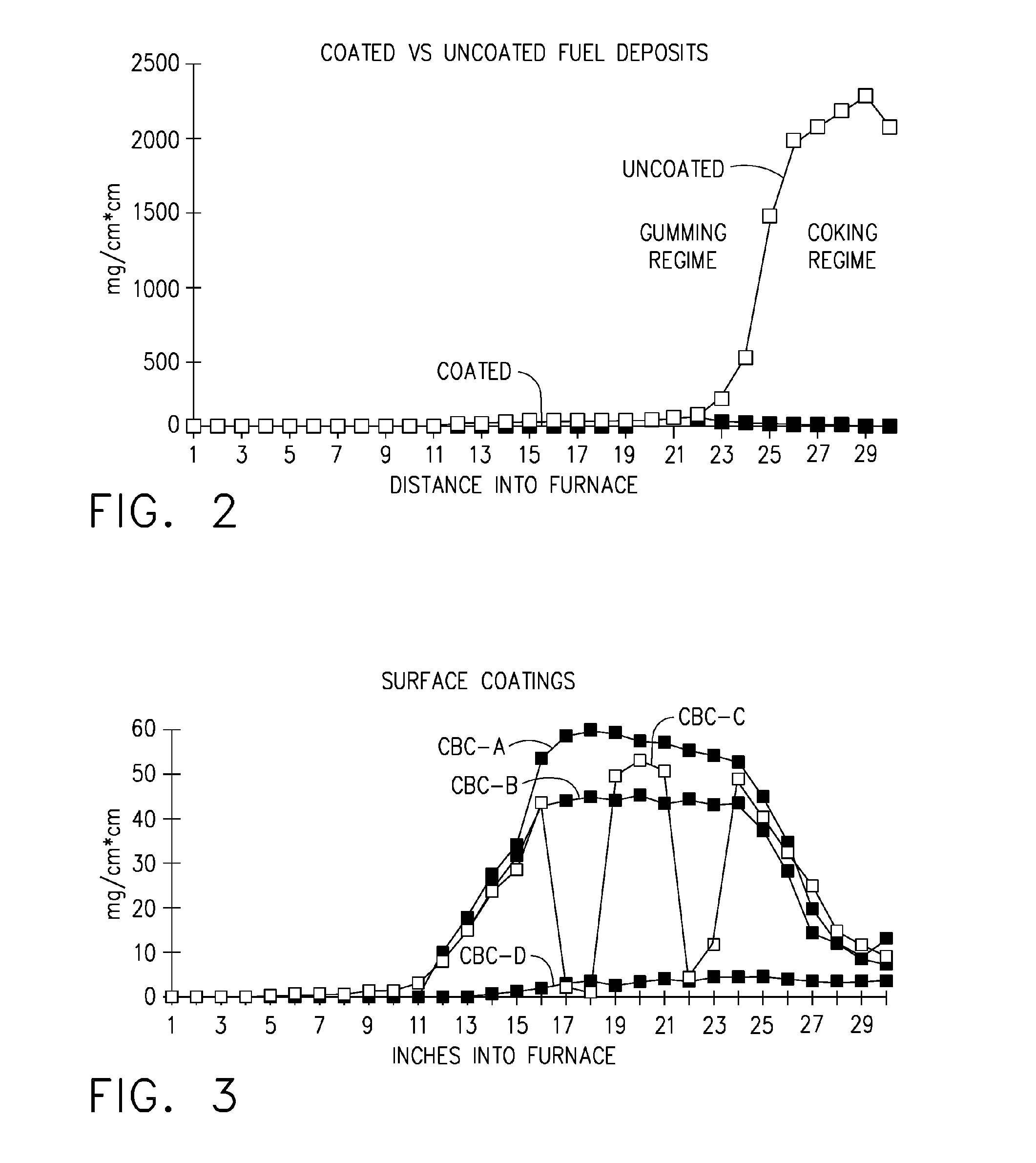Method and coating system for reducing carbonaceous deposits on surfaces exposed to hydrocarbon fuels at elevated temperatures
a technology of hydrocarbon fuel and carbonaceous deposits, applied in the field of coatings, can solve the problems of limiting the usefulness of the fuel, increasing the propensity for gum and coke formation, and significantly more problems with thermal instability, so as to reduce the formation of carbonaceous deposits, reduce the adhesion of such deposits, and reduce the effect of heat transfer
- Summary
- Abstract
- Description
- Claims
- Application Information
AI Technical Summary
Benefits of technology
Problems solved by technology
Method used
Image
Examples
Embodiment Construction
[0016]FIG. 1 represents coating systems 14 and 24 on a component 10 having a containment wall 12 that contacts a hydrocarbon fluid (e.g., fuels and oils) at elevated temperatures. The coating systems 14 and 24 serve to prevent or at least significantly reduce the formation and adhesion of carbonaceous deposits that would otherwise adhere to the wall 12 if maintained at a temperature of up to about 650° F. (about 345° C.). The invention is applicable to any hydrocarbon fluid in which carbonaceous gum (or other polymers) deposits form when the fluid is subjected to elevated temperatures, generally above 140° C. and particular at temperatures of about 220° F. to 650° F. (about 105° C. to 345° C.). Such fluids may be pure hydrocarbon or mixtures thereof. Fluid containment articles that can benefit from the present invention may be any component which is adapted to contain or transport a hydrocarbon fluid through an environment (liquid, gas, or solid) at a different temperature. Notable ...
PUM
| Property | Measurement | Unit |
|---|---|---|
| thickness | aaaaa | aaaaa |
| thickness | aaaaa | aaaaa |
| temperature | aaaaa | aaaaa |
Abstract
Description
Claims
Application Information
 Login to View More
Login to View More - R&D
- Intellectual Property
- Life Sciences
- Materials
- Tech Scout
- Unparalleled Data Quality
- Higher Quality Content
- 60% Fewer Hallucinations
Browse by: Latest US Patents, China's latest patents, Technical Efficacy Thesaurus, Application Domain, Technology Topic, Popular Technical Reports.
© 2025 PatSnap. All rights reserved.Legal|Privacy policy|Modern Slavery Act Transparency Statement|Sitemap|About US| Contact US: help@patsnap.com



